Looking for fun alphabet letters worksheets to practice calligraphy and lettering? Here you will find uppercase letter worksheets and different lowercase alphabet lettering styles.

If you already read my post about Calligraphy alphabet styles, you already know the details about letter families. So, I will assume that you already read that one as well as the History of Calligraphy, that one covers the evolution of alphabets, as well as my Cursive into guide.
Those post that I mentioned already cover all the basics and history as well as touch on the points to achieve your very own letter style, so I will not focus on any of those points today.
I will share and focus on my favorite supplies to practice, how to take advantage of the worksheets, as well as examples for 30 ways to write each letter of the alphabet in both uppercase and lowercase.
And remember to download the FREE workbook at the bottom of the post (or inside the Letter Vault if you are already subscribed to the HowJoyful Newsletter.
- Difference between Calligraphy & Lettering
- How to use the alphabet worksheets
- Paper Recommendations
- Extras to help your practice
- Brush pen recommendations
- How many letters are there in the alphabet?
- UPPERCASE LETTER ALPHABET
- 1 – Letter A uppercase
- 2 – Letter B uppercase
- 3 – Letter C uppercase
- 4 – Letter D uppercase
- 5 – Letter E uppercase
- 6 – Letter F uppercase
- 7 – Letter G uppercase
- 8 – Letter H uppercase
- 9 – Letter I uppercase
- 10 – Letter J uppercase
- 11 – Letter K uppercase
- 12 – Letter L uppercase
- 13 – Letter M uppercase
- 14 – Letter N uppercase
- 15 – Letter O uppercase
- 16 – Letter P uppercase
- 17 – Letter Q uppercase
- 18 – Letter R uppercase
- 19 – Letter S uppercase
- 20 – Letter T uppercase
- 21 – Letter U uppercase
- 22 – Letter V uppercase
- 23 – Letter W uppercase
- 24 – Letter X uppercase
- 25 – Letter Y uppercase
- 26 – Letter Z uppercase
- LOWERCASE LETTER ALPHABET
- 1 – Letter a lowercase
- 2 – Letter b lowercase
- 3 – Letter c lowercase
- 4 – Letter d lowercase
- 5 – Letter e lowercase
- 6 – Letter f lowercase
- 7 – Letter g lowercase
- 8 – Letter h lowercase
- 9 – Letter i lowercase
- 10 – Letter j lowercase
- 11 – Letter k lowercase
- 12 – Letter l lowercase
- 13 – Letter m lowercase
- 14 – Letter n lowercase
- 15 – Letter o lowercase
- 16 – Letter p lowercase
- 17 – Letter q lowercase
- 18 – Letter r lowercase
- 19 – Letter s lowercase
- 20 – Letter t lowercase
- 21 – Letter u lowercase
- 22 – Letter v lowercase
- 23 – Letter w lowercase
- 24 – Letter x lowercase
- 25 – Letter y lowercase
- 26 – Letter z lowercase
- DOWNLOAD THE WORKSHEETS
- Font Credits
Difference between Calligraphy & Lettering
I think that is so important to begin with the most basic concept when looking for worksheets because unlike what most beginners think, Calligraphy and Lettering are very different things.
As a very short explanation, lettering is about drawing, Calligraphy is about writing. No matter the tools used, it is about the process of creating letters.
When we are doing lettering, we correct, erase, re-trace and mold the letters to fit the shapes …
When we do calligraphy ….
If you want to check this in more detail, I wrote a full post about the difference between calligraphy, lettering and typography here.
How to use the alphabet worksheets
To make the most out of the worksheets I am sharing with you, in this post, on the website and on the Letter Vault, I have 3 recommendations so you can save money when you practice, since printing sheets can get expensive, and some paper pads can also get expensive when you try to practice as much as possible.
So, my 3 different recommendations for practice are:
1 – Print the worksheets directly into my recommended HP paper and work with your brush pens right on top of them.
2 – Print your worksheets in any print paper, and use tracing paper on top of your worksheets to practice
3 – Print your worksheets on any kind of paper, and using a light pad, place a piece of my favorite HP paper on top so you can see the worksheet or guidelines below for practice.

Paper Recommendations
The thing about practicing with brush pens, is that if you use regular copy paper, the tips of your brush pens will start to fray. To avoid this, you need to have smooth paper, so below I list my favorite options for affordable AND super smooth options.
1 – HP Smooth Choice Laserjet Paper
This is definitely the more economical alternative for paper, I use this exact paper to print all my drill grids. It's a great way to save money while you practice so that you can use your special paper for projects, and your brush pens will not get damaged like they do with regular copy paper.
2 – Canson Tracing Paper Pad
This is my favorite paper for inking and also for brush calligraphy since it's super smooth and it does not absorb all the ink as some do, but because of this you need to be careful and wait for the ink to dry, or you will have a mess in your hands and your paper! It has 50 sheets and measures 9×12 inches.
Extras to help your practice
1 – Cricut BrightPad
After using the Cricut BrightPad for a few months I am a converted believer. It's so much better than my older light box (linked below) little things like the fact that you have to push down in order to change the brightness prevent you from hitting it by accident like I always do with my older light-box.
2 – Huion LightBox
If you don't want to use tracing paper a light pad is a perfect solution ( and also a great one if you venture into watercolor) This is the one I have now, I tried some of the more expensive ones and this one beats most of them, it's worth its weight in gold (actually way more than it's weight because it's super light!)
Brush pen recommendations
1 – Tombow Fudenosuke 10 color pack
This are a new products from Tombow and a very highly anticipated one. The Classic black Fude pens are the favorites of many lettering artists (me included) And they are the ones I always recommend to beginners because the tips are extremely resistant, and they seem to last longer than the dual tips, plus the size is a great one for beginners.
2 – Pentel Arts Sign Pen Touch, Fude Brush Tip set
This is the box I mentioned above, they are great fude brush pens, juicy and with a great flexible tip, they last a good time and if you use them with good paper (smooth) the tip will not fray easily. The colors are super awesome too, yay!
3 – Tombow advanced lettering set
I really like the selection of colors and different pens and other tools that Tomow added to this pack, you have pretty much everything you need to further your practice and experiment with color without having to buy the full 12 pack of dual brushes, and since it's a bundle you get a better deal.
4 – Kuretake Fudebiyori brush pens
These are my current favorite brush pens, they have an easy-to-use felt tip and built-in ink supply combine the convenience of a regular maker with the expressive line variation of a traditional brush.
5 – Crayola Super Tip Markers
These are one of the most budget-friendly markers to get started, on Amazon though the price fluctuates a ton, so keep an eye for when the price drops. Or you can always buy them from Blick, they have the best prices and offers per size.
6 – Crayola Washable Broad Line Markers
I love how budget-friendly these markers are, they are perfect for drills and the tips are not too soft (sometimes you might need to reshape them though) but other than that are they are perfect, budget-friendly, and they last a long time. If you are just starting and doing many drills get a box of these, you can thank me later ;)
How many letters are there in the alphabet?
The English alphabet has a total of 26 letters.
But historically, it used to have 27, the “Et” or Ampersand (and) used to be considered a letter of the alphabet, even though now it's just another symbol on the English language. As @jonhudson.main over at Medium share:
Et is the Latin word for and. Its usage can be traced back to the first century! This is where the ampersand was born. The “&” symbol was created as a ligature (combination of two letters) of the letters “e” and “t” or “et”. It was considered a letter of the alphabet all the way up until the early 17th century.
– @jonhudson.main from Medium
A great example of use that I found via Artemy Lebedev shows the regular 26 letters of the alphabet along with the ampersand at the very end.

Ampersand came to be a staple element in European writing to the extent that it wound up as the last letter of the English alphabet in all primers by the early 19th century (and started to be removed from them some hundred years later).
– Artemy Lebedev
And while the ampersand is no longer considered a letter, it is still very much loved by pretty much every letter enthusiast I've come across. The evolution of it's shape it's nice to see and also explore.

UPPERCASE LETTER ALPHABET
Uppercase letters, also called Capitals letters are normally not the letters we start with when we are beginners because the lowercase letter are more simple and require fewer strokes (for the most part) to complete.
But I wanted to start with the uppercase alphabet because is usually the one that most researched kinds beginner need the more help with figuring out different ways to write.
1 – Letter A uppercase
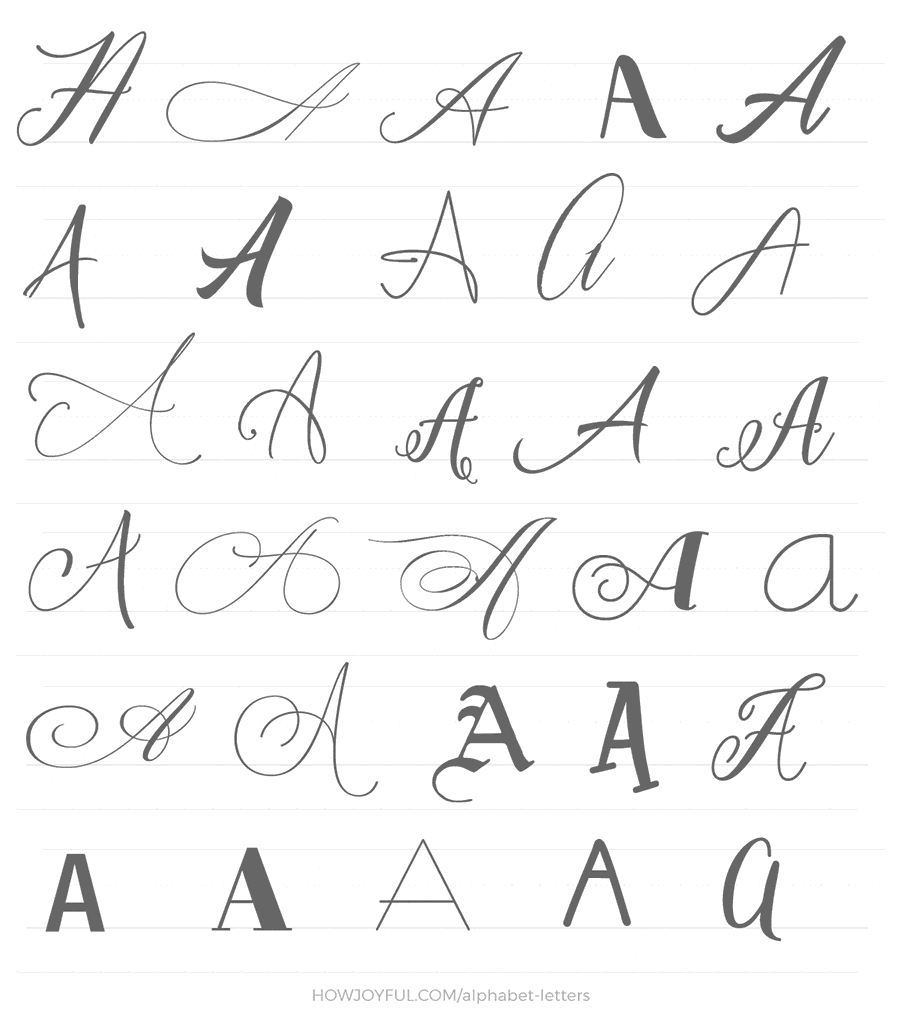
2 – Letter B uppercase
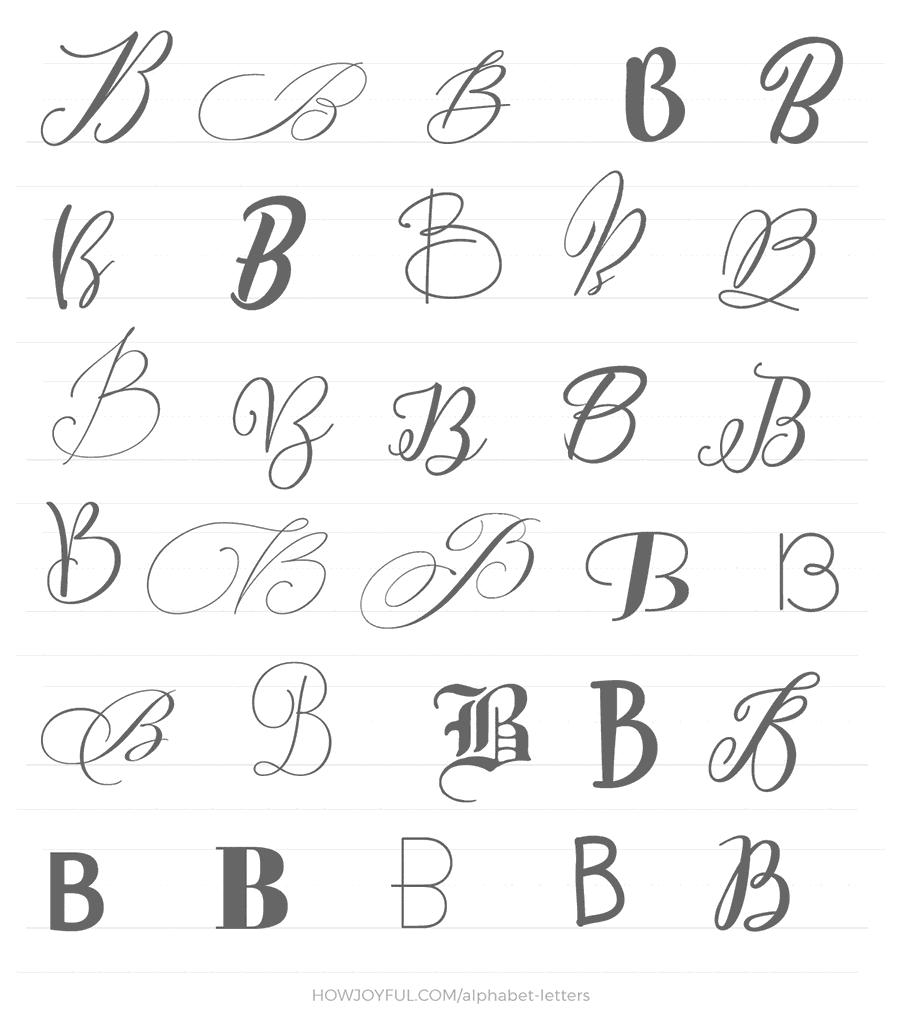
3 – Letter C uppercase

4 – Letter D uppercase

5 – Letter E uppercase

6 – Letter F uppercase

7 – Letter G uppercase
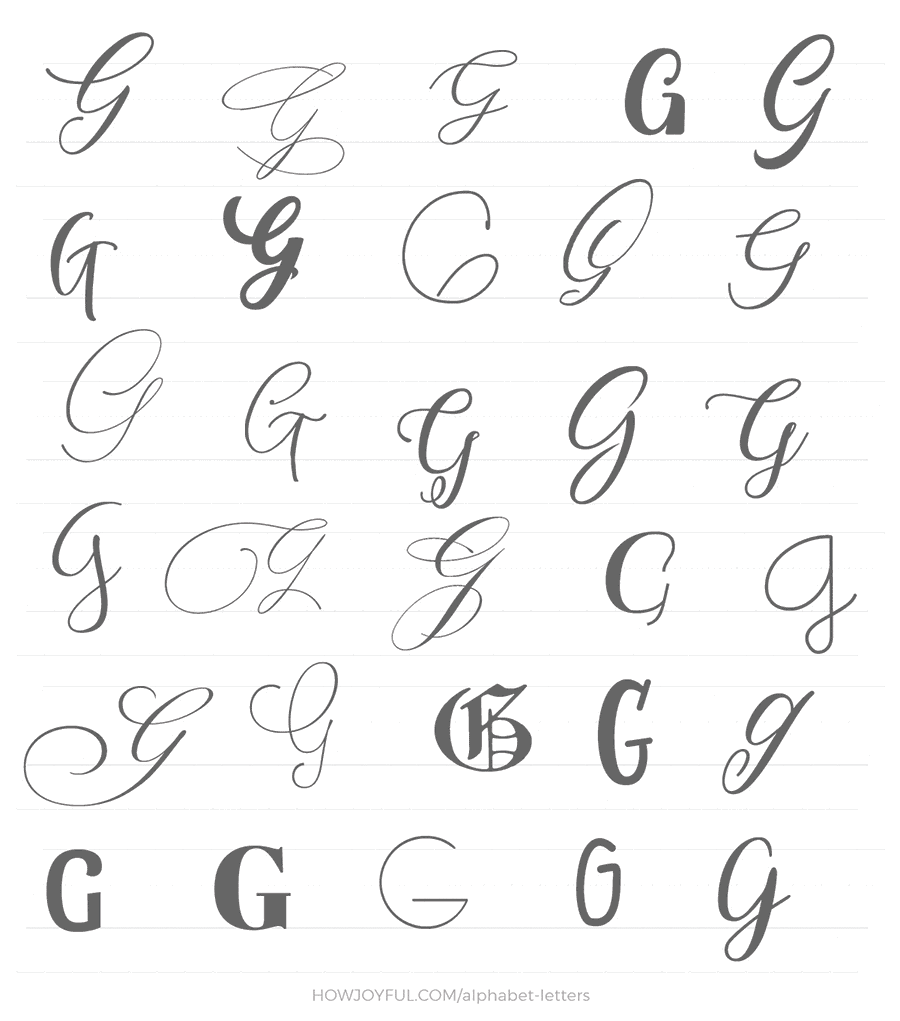
8 – Letter H uppercase
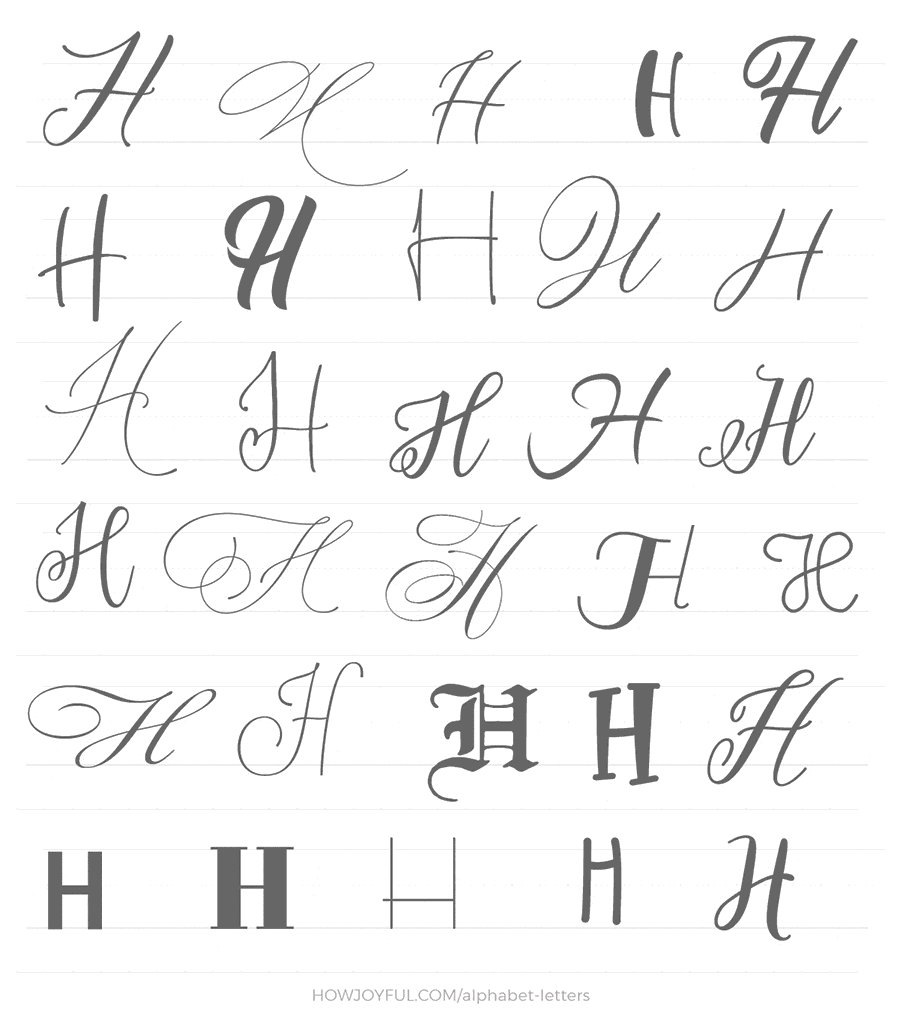
9 – Letter I uppercase

10 – Letter J uppercase

11 – Letter K uppercase

12 – Letter L uppercase

13 – Letter M uppercase

14 – Letter N uppercase
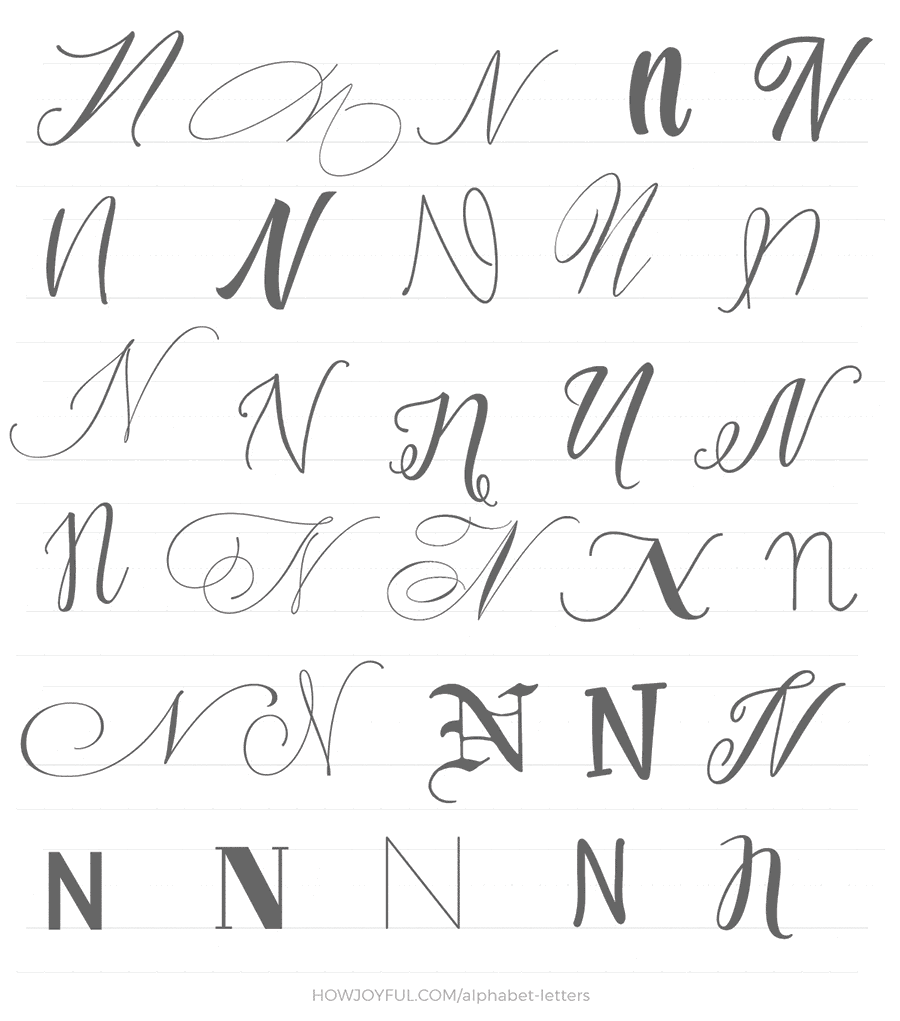
15 – Letter O uppercase

16 – Letter P uppercase

17 – Letter Q uppercase

18 – Letter R uppercase
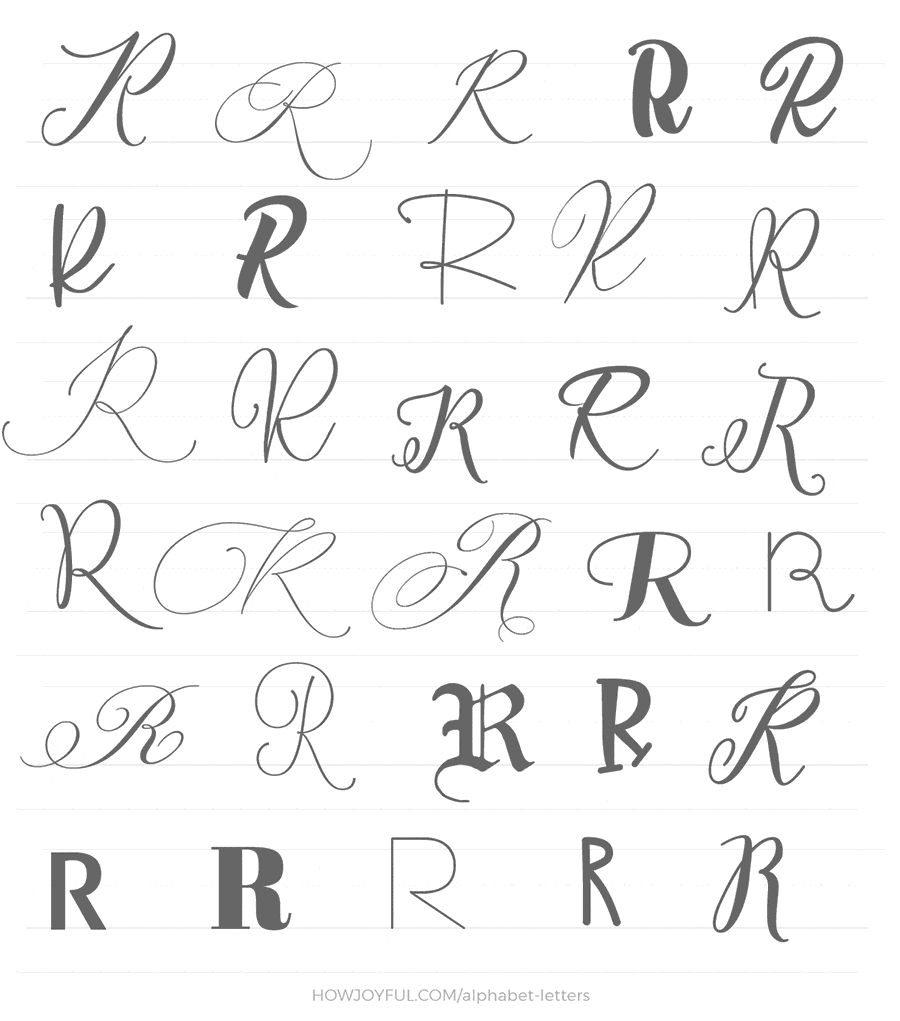
19 – Letter S uppercase

20 – Letter T uppercase
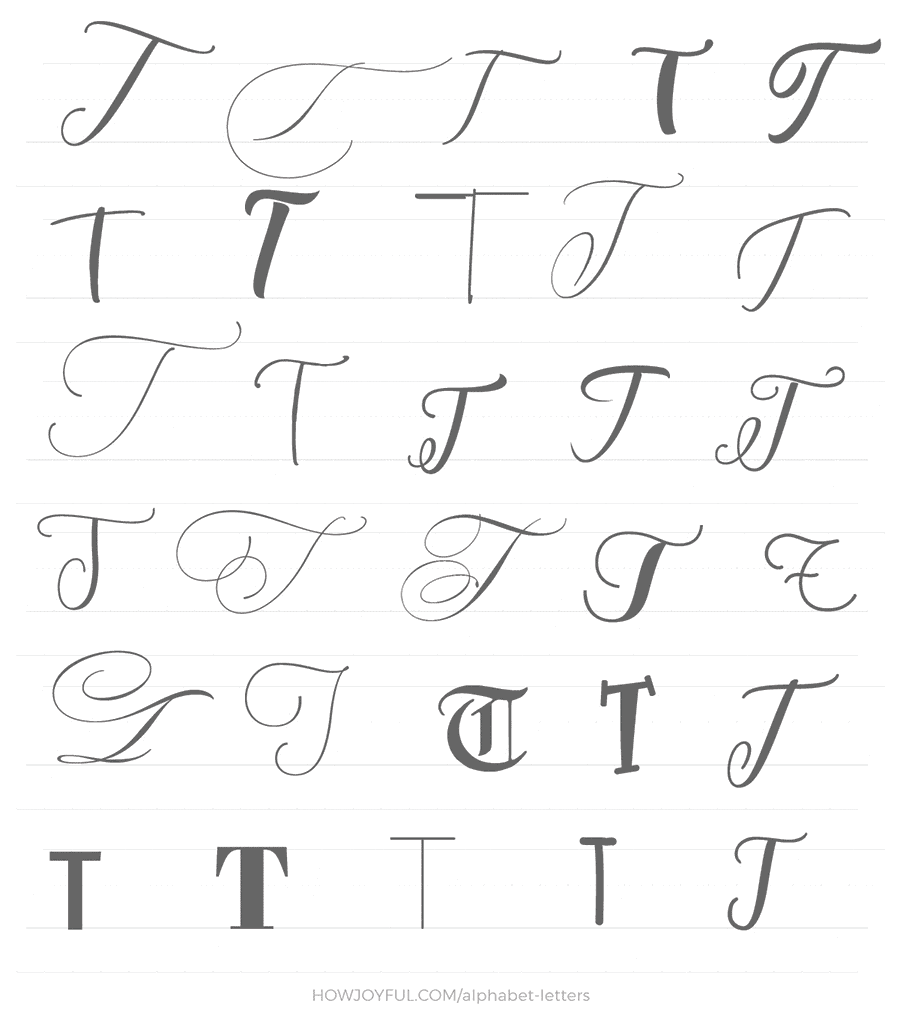
21 – Letter U uppercase

22 – Letter V uppercase

23 – Letter W uppercase

24 – Letter X uppercase

25 – Letter Y uppercase

26 – Letter Z uppercase

LOWERCASE LETTER ALPHABET
As I mentioned, lowercase letters are usually the first one we start when we are learning to do brush calligraphy and lettering. They usually require fewer strokes, and they are easier to understand once we have mastered the basic strokes.
So if you are using the FREE worksheet that I am giving away at the bottom of the post, make sure that you start with the lowercase letters first =]
1 – Letter a lowercase
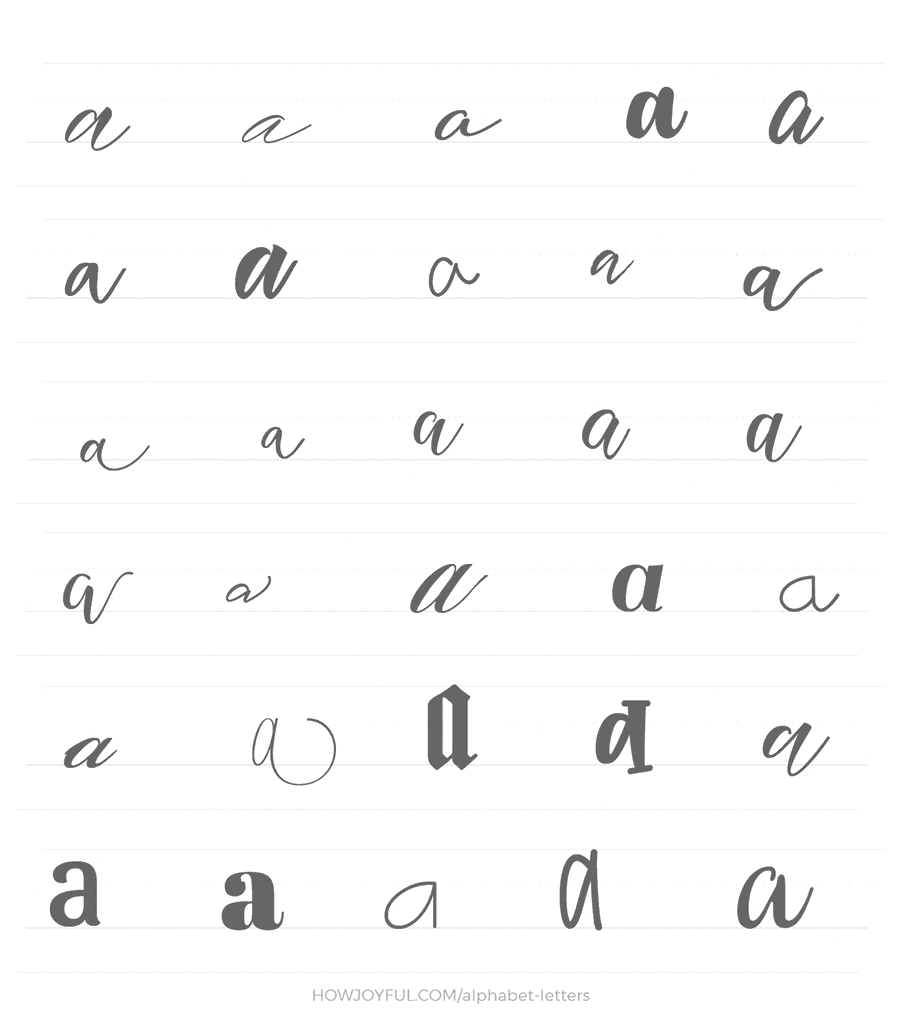
2 – Letter b lowercase

3 – Letter c lowercase

4 – Letter d lowercase

5 – Letter e lowercase

6 – Letter f lowercase

7 – Letter g lowercase

8 – Letter h lowercase

9 – Letter i lowercase

10 – Letter j lowercase

11 – Letter k lowercase

12 – Letter l lowercase

13 – Letter m lowercase

14 – Letter n lowercase

15 – Letter o lowercase

16 – Letter p lowercase

17 – Letter q lowercase

18 – Letter r lowercase

19 – Letter s lowercase

20 – Letter t lowercase

21 – Letter u lowercase

22 – Letter v lowercase

23 – Letter w lowercase

24 – Letter x lowercase

25 – Letter y lowercase

26 – Letter z lowercase

DOWNLOAD THE WORKSHEETS
To help your practice, I have compiled a workbook that contains all the letters that we revised today, and if you subscribe to the HowJoyful Newsletter, you will also have access to all the other extra worksheets and workbooks that are available for FREE inside the Letter Vault! All you have to do is fill out the box below!
If you are already subscribed, there's no need to fill out the box again, all you have to do is head over to the Letter Vault and download the Letter styles workbook.
Font Credits
The examples that I am sharing here (and the accompanied worksheets) were created using the fonts below, you can reference them by the name in case you are looking for a particular one, and I have also linked to them below in case you want to download or purchase.

I hope you liked this post and if you are looking for more Calligraphy post check out this selection:
- Brush calligraphy for beginners guide
- Calligraphy alphabets: What are letter styles?
- The difference between Lettering & Calligraphy
- The best brush pens for beginners
- 15 of the best books for Calligraphy & lettering
- Guide to American Cursive
- 25 of the best classes for calligraphy & lettering
- A brief history of Calligraphy
- The best paper for Calligraphy
- How to make passive income as a lettering artist

Have a wonderful day and as always, feel free to message me if you have suggestions for additional alphabets or topics that you want me to cover on the blog!
And remember! Practice makes better!
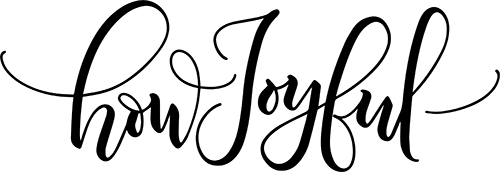







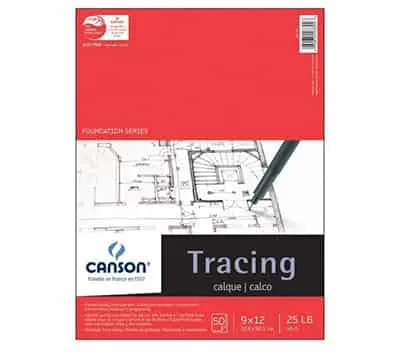
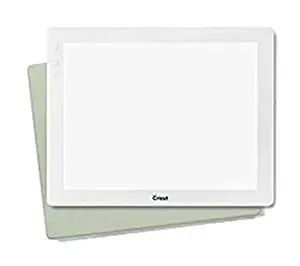
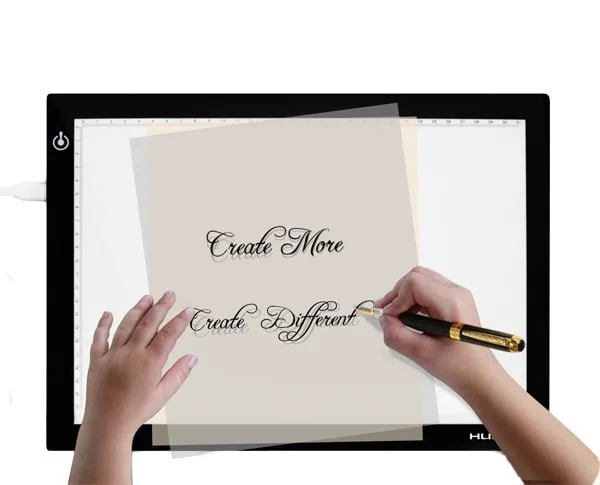

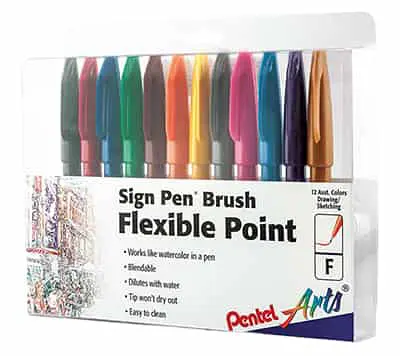
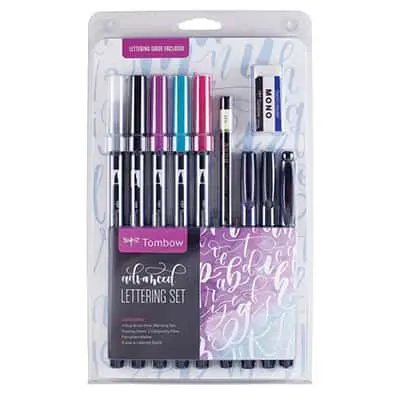
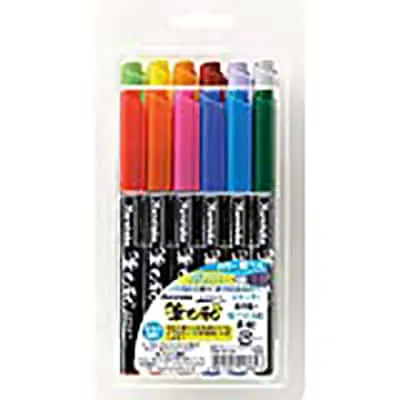


Patricia Rogerson
Thursday 4th of March 2021
Hello Joy thank you so much I enjoyed your blog that you have written so beautifully and amazing I must say you are very talented and I’m going to follow you were ever you go XOXO take care God bless
Sara
Friday 15th of January 2016
Oh no! These aren't available in your etsy store any longer?! I love the turquoise one!
Hanneke
Sunday 26th of February 2012
Your blog makes me happy! :) (and colors too)
Joy
Monday 27th of February 2012
Thank you Hanneke =]!!
Jesse
Thursday 8th of December 2011
I love them!! I just got them so I can frame and give to my friends for Christmas, it was like you knew their favorite colors!
Anni
Wednesday 30th of November 2011
This are so cute! I will be definitely checking your shop for the patterns and pretty printable